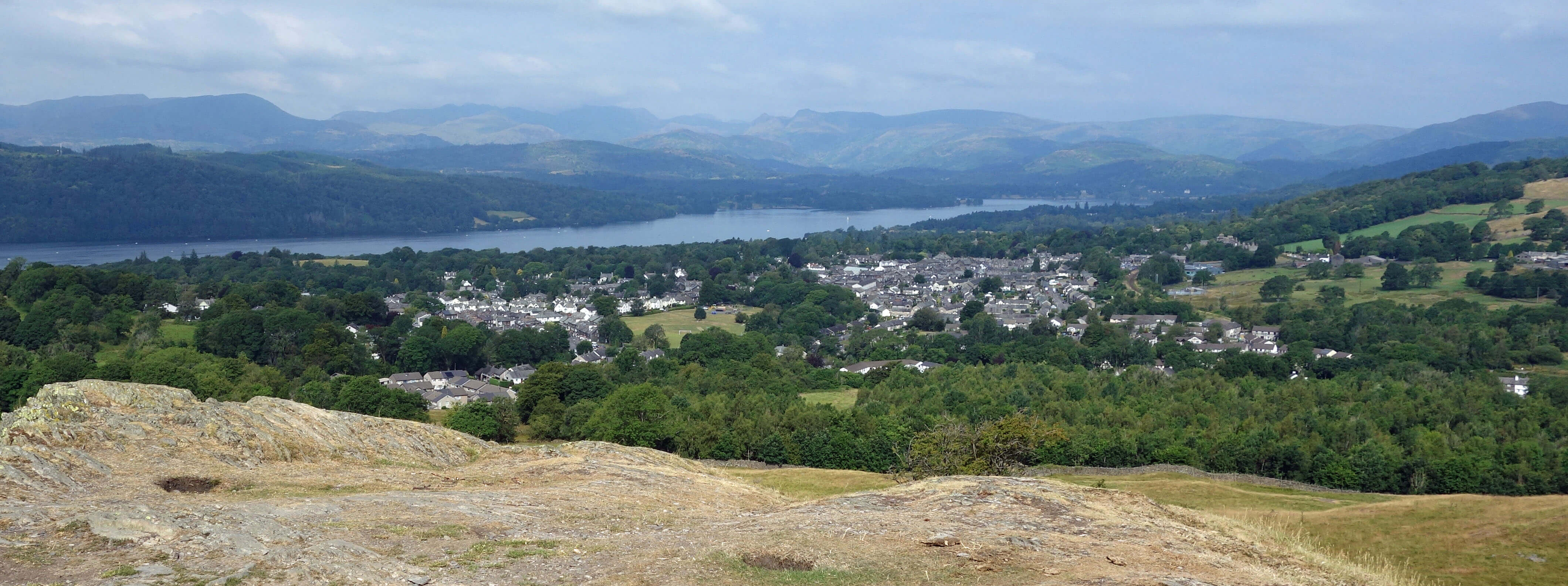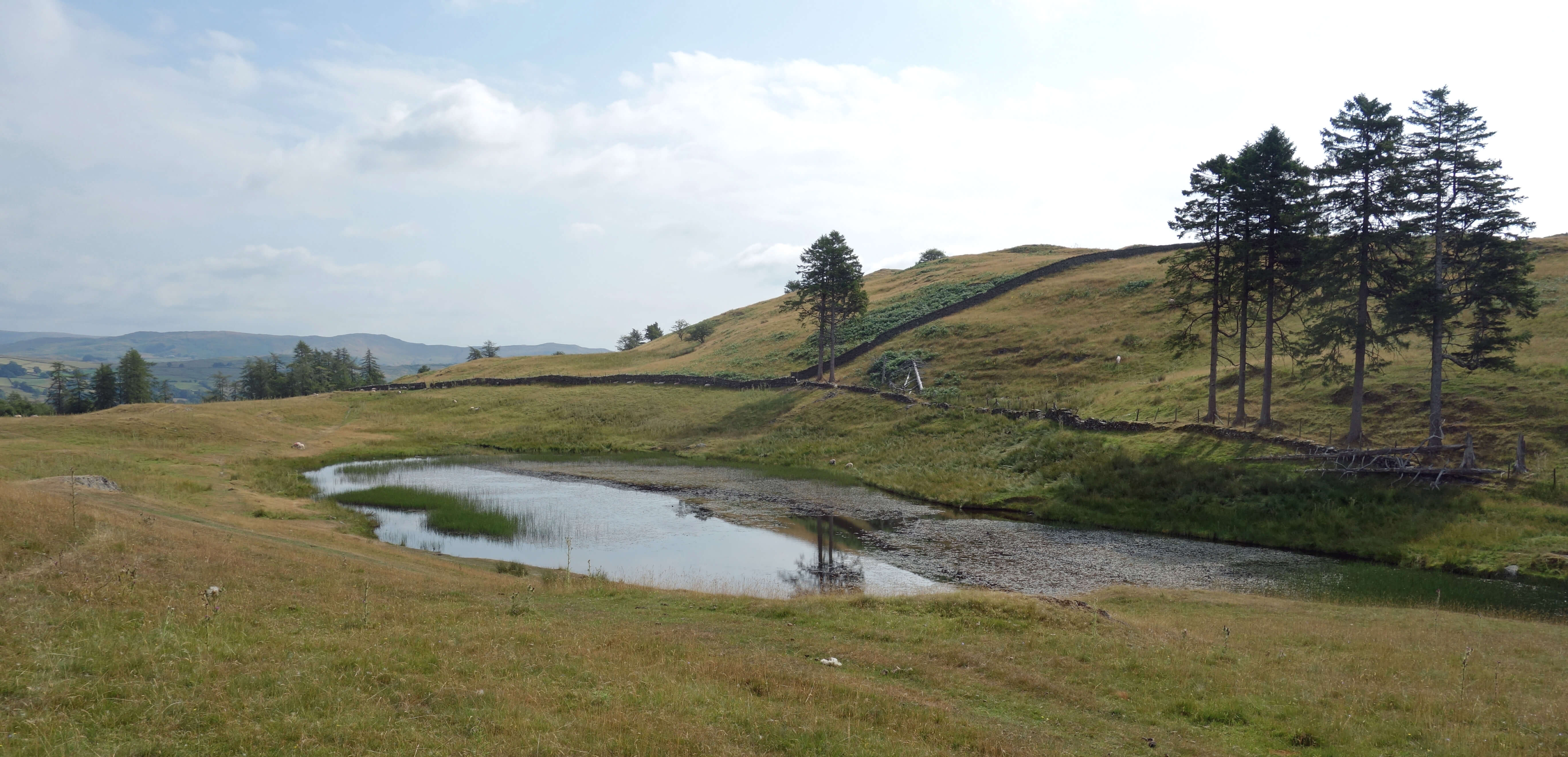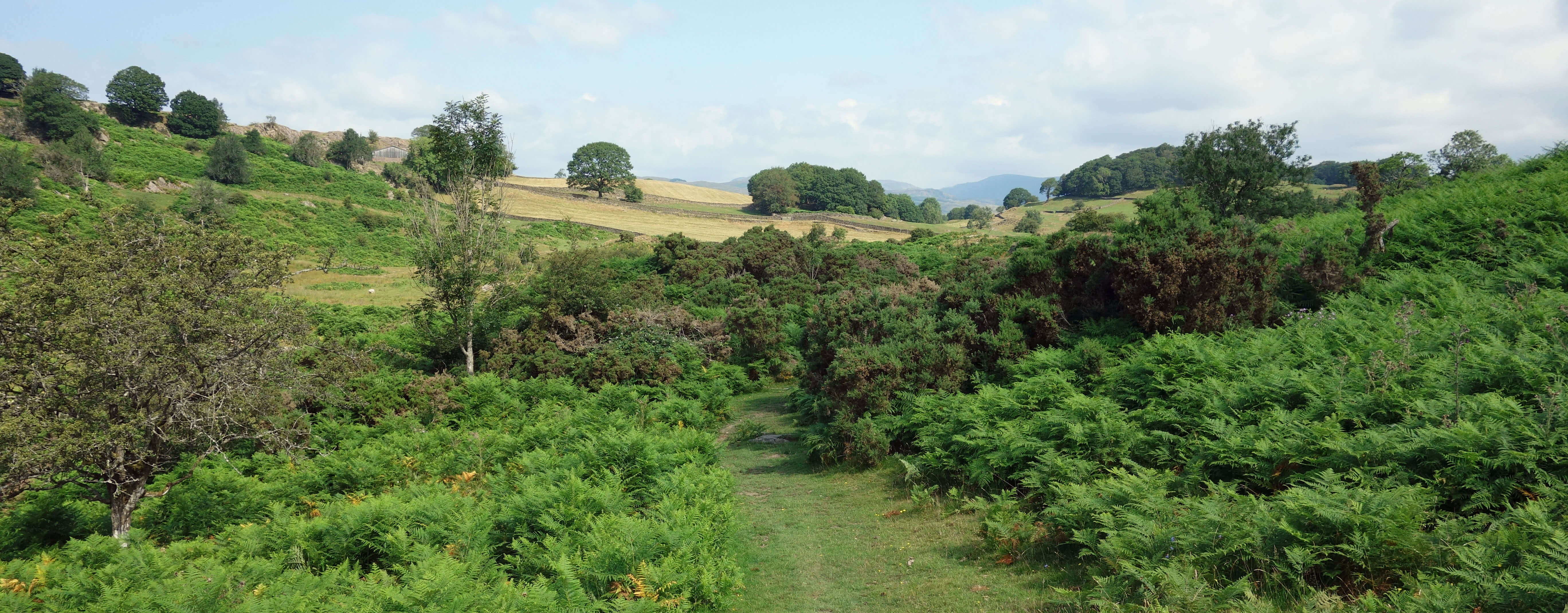
Home
Preamble
Index
Areas
Map
References
Me
Drakkar
Saunterings: Walking in North-West England
Saunterings is a set of reflections based upon walks around the counties of Cumbria, Lancashire and
North Yorkshire in North-West England
(as defined in the Preamble).
Here is a list of all Saunterings so far.
If you'd like to give a comment, correction or update (all are very welcome) or to
be notified by email when a new item is posted - please send an email to johnselfdrakkar@gmail.com.
137. Bowness, Empty and Full
Bowness-on-Windermere is a place that provokes thoughts on the nature, meaning and futility of life.
Bryson (1995) described Bowness as a "misplaced seaside resort" and found "at least twelve shops selling
Peter Rabbit stuff". However, he missed 'The World of Beatrix Potter', which had
opened in 1991.
Me too. I walked from Windermere railway station away from the lakeside attractions of Bowness towards
the gentle, undulating, rocky hills east of Bowness. I headed first for School Knott (232 metres), which
provides a splendid view over the upper reaches of the lake towards the central peaks. On this occasion,
the view was not perfect. Clouds sat upon Scafell Pike, as they often do, but the shapes of Coniston Old Man, Bowfell and
the Langdale Pikes could be made out through the haze that had accumulated after several hot, still days.

The view from School Knott

The tarn near School Knott
Thereafter, I walked for five miles through fields of bracken and gorse, around rocky outcrops,
with occasional glimpses of distant tops. I had not come armed with an itinerary of interesting features
to seek out – and indeed I saw little of interest or excitement to report here. It was perfectly peaceful
and pleasant. I particularly enjoyed two sections. First, the path between Crag House and Gilpin Farm,
which is the kind of place where not only do you see nobody but you would be astonished to see somebody.
You feel alone with the birds, butterflies and bushes. And, secondly, the old track marked as a permissive path
across the moor after Mitchelland Farm. I expect that very few people walk along this track although, from
the look of it, it was probably a significant route in past centuries. On old maps it is marked as 'Green Lane'
and of equal importance to the now paved road to the south.

Typical terrain
Since leaving Windermere railway station I had seen only a handful of people, none with a backpack and
most with a dog. This all changed once I left Brant Fell (191 metres), where there is another fine
view over the lake, and dropped down into Bowness. Bowness was full. Every guest house had ‘no vacancies’, every café seat was occupied, traffic barely moved, families cluttered the pavements – and it was hot.

The view from Brant Fell
I took refuge on the island of calm that is St Martin’s Church. The Baddeley guide to the
Lake District (Baddeley, 1880, 1922) devotes more pages to this church than to any other in the Lake
District, so if I am to be marooned at a church perhaps there is no better one. Baddeley describes
many features of the church – the ancient font, the biblical texts on the nave pillars,
the Latin jubilation (1629) on the failure of the Gunpowder Plot (1605), the marble reredos,
and so on – but, as expected, the church was closed. This is just as well since I feel it best to leave
church visits to those who are able to appreciate church architecture. Nobody
should be allowed to visit a church unless they know the difference between architrave and archivolt.
I tried to study the stained glass windows of the eastern wing, said to be the church’s outstanding
treasure with the earliest glass believed to date from 1260 and other parts having been
transferred from Cartmel Priory in 1460, but it was impossible to do so from the
outside.
I did at least find the grave-stone of Rasselas Belfield, an ‘Abyssinian slave’. The inscription,
written in 1822 (before the Slavery Abolition Act of 1833) and not by Rasselas Belfield, of course,
seems so mind-bogglingly naive
to me that I include it here:
A Slave by birth I left my native Land
And found my Freedom on Britannia's Strand:
Blest Isle! Thou Glory of the Wise and Free,
Thy Touch alone unbinds the Chains of Slavery
Historic England
provides a more detailed and sympathetic analysis.
I couldn’t cower in the churchyard forever. So I battled through the throngs
and made my way up New Road (the A5094) to
Windermere, passing the Baddeley Clock Tower on the way. It seems that Baddeley was a Bowness man.
No wonder he thought so much of the church. Perhaps it’s not so special after all.
I am left to ponder. Why do so many people pile into Bowness? Do they enjoy the hustle
and bustle? Do they think that Bowness represents the best of the Lake District? Does pottering
about Bowness for a week really make a pleasurable holiday? Do they go home thinking that they have
seen the Lake District? What’s wrong with me, that unlike thousands of others
I prefer walking on empty hills and fields?
Date: July 26th 2021
Start: SD414987, Windermere railway station (Map: OL7)
Route: E on A591, S, SE – School Knott – SE, SW, E – Hag End – E, S – Outrun Nook – S – Gilpin Farm – W – Mitchelland Farm – SW, W, NW – Lindeth Lane – N, W – Brant Fell – N, W, NE, W – Bowness – NE on A5074 – Windermere railway station
Distance: 9 miles; Ascent: 180 metres
Home
Preamble
Index
Areas
Map
References
Me
Drakkar
© John Self, Drakkar Press, 2018-

Top photo: The western Howgills from Dillicar;
Bottom photo: Blencathra from Great Mell Fell






